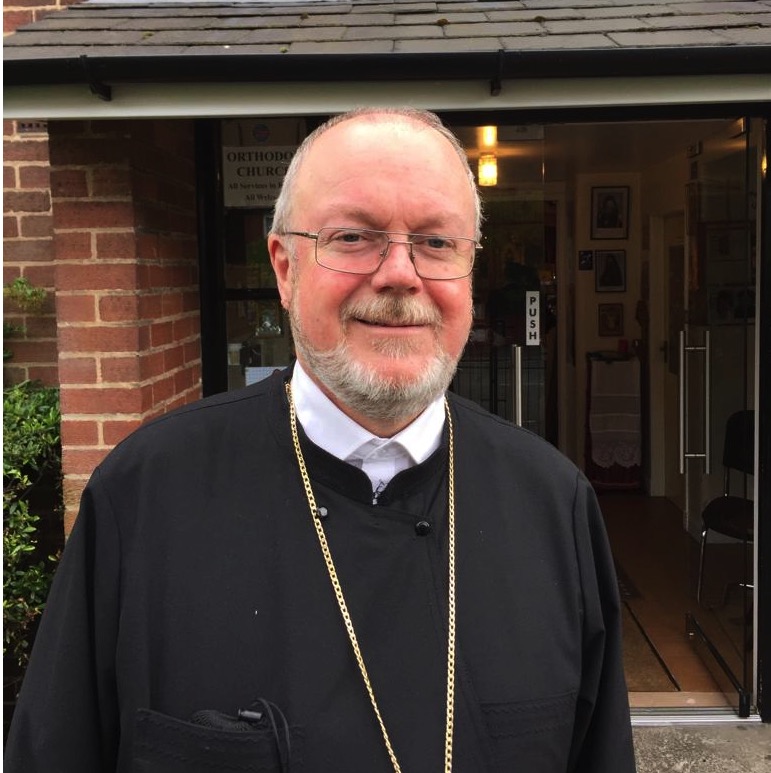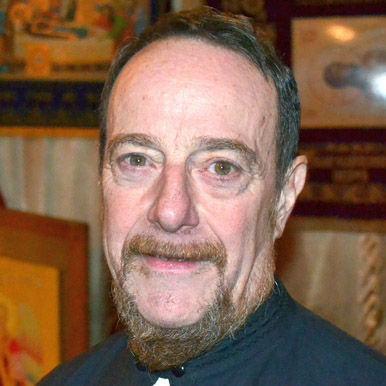Today we celebrate the Entry into the Temple at a very young age of the Most Holy Theotokos and Ever-Virgin Mary. I begin with the words of St Gregory Palamas, Archbishop of Thessalonica, preached in the 14th century to celebrate this occasion, readily available on the web by searching for “St Gregory Palamas Homily 51.” St Gregory boldly proclaimed a remarkable interpretation of the Incarnation of Christ and the life of Holy Mary. He preached that Christ’s goal for each of our lives was, and I quote, “to reclaim for Himself our nature which had been . . . corrupted . . . and [to] raise it to the heights of Heaven. For this purpose,” preached St Gregory, Christ “had to assume a flesh [that is, a body] that was both new and ours, that He might refashion us [that is, shape and form us again] from out of ourselves.”
In other words, rather than stressing the difference between the old person who lives in sin and the new person who lives in grace—in the love of God—St Gregory proposed that with the Incarnation, the body of Christ, was, “both new and ours.” Christ had both the spiritual authority and the understanding of us as human beings that He could shape us again and form us anew as human persons “from out of ourselves.” How can this happen? How can we be reformed from new knowledge of ourselves? Who are we now? Who can we be when we welcome and cooperate with Christ as He reforms our goals, our hopes, our lives and our closeness to Him?
Having stated the problem that Christ wishes to “refashion us from out of ourselves” St Gregory continues immediately, in the next sentence of his sermon with the solution: “Now [so Christ] finds a Handmaiden perfectly suited to these needs, the supplier of her own unsullied [that is, clean and pure] nature, the Ever-Virgin [Mary] now hymned by us, and whose miraculous Entrance into the Temple, into the Holy of Holies [that is, the most sacred place in the Temple], we now celebrate.” In other words, Holy Mary is a model for our lives. As St Gregory explains, “it is through prayer and spiritual readiness that [Holy Mary] declared to the angel: ‘Behold the handmaid of the Lord; let it be to me according to Thy Word” (Luke 1.38). That is precisely the challenge that confronts each of us today—to prepare ourselves “through prayer and spiritual readiness” to face whatever unknown challenges the Lord has for each of us in the future.
How was Holy Mary so well prepared for life and for the Lord’s work? Because her parents, Joachim and Anna, loved her and taught her how to love God and how to love others. St Gregory reflects that both Joachim and Anna had prayed that the Lord would “deliver them from their childlessness, and [they] promised to dedicate their child to God from its infancy.” Joachim and Anna understood that in life we each seek to love God and to love others to the best of our ability. They knew, as we know, that God loves us; but the extent to which others will love us back is unknown. We still have a responsibility to love God and to love others—to seek the will of God in our lives “through prayer and spiritual readiness.” Parents and grandparents: be encouraged; be encouraged that you can help prepare your children and grandchildren “through prayer and spiritual readiness” for whatever work the Lord has for them, even though that work is unknown to you at this time.
St Gregory reflects that it is entirely appropriate for us to, as he phrases it, “unceasingly hymn and bless the Mother of [God who guides us in] the raising of our nature from death, and [the] ascent [of our nature] from earth to Heaven, and the promise of immortal life and unfailing salvation” [end of quote]. Note that St Gregory’s praise of the Mother of God is not only because she gave birth to Jesus Christ, but also because she helps us to raise “our nature from death … to immortal life, … from earth to heaven.”
St Gregory closes his beautiful sermon with the words: “Let us desire spiritual gifts, which remain undiminished. Let us turn our reason and our attention from earthly concerns and raise them to the inaccessible places of Heaven, to the Holy of Holies, where the Mother of God now resides.” That’s a big challenge. St Gregory admits that heaven and the Holy of Holies in the Jewish Temple in first-century Jerusalem are both “inaccessible” to us—that is, difficult or impossible to reach. How then can we “turn our reason and our attention from earthly concerns and raise them to the inaccessible places of Heaven, to the Holy of Holies”?
Pause to remember that this story about the Entry of the Theotokos into the Temple is not in the Bible, but in the Proevangelion of James. As Metropolitan Kallistos and Mother Mary point out in The Festal Menaion: “The Orthodox Church does not place the Proevangelion of James on the same level as Holy Scripture: it is possible, then,” they write, “to accept the spiritual truth which underlies this narrative, without necessarily attributing a literal and historical exactness to every detail.” They conclude: “The deeper meaning of the story is . . . [that Holy Mary] who was chosen to be the instrument of this mystery was to an especial degree the object of God’s ever-watchful care.” Let’s try then to understand what was “the spiritual truth” linked to the “Holy of Holies” into which Holy Tradition tells us that the High Priest Zachariah, the father of John the Baptist, brought Holy Mary.
The original Holy of Holies was in the Tabernacle constructed by Moses on the instructions of God, carried in the desert, as set out in Chapter 26 of the book of Exodus. This was copied in the second temple built by Herod. In both the original Holy of Holies in the Tabernacle and in the second temple there was a curtain, a protecting veil, that prevented anyone from seeing inside. When Jesus Christ was crucified, the curtain of Herod’s temple was “torn in two from top to bottom,” as set out in the Gospel of St Mark, chapter 15, verse 38. As one Biblical commentary points out, this tearing of the curtain gave to those who believed in Christ “access to the presence of God…. The tearing of the curtain indicated that Christ had entered heaven itself for us so that we too may enter God’s very presence.”
It was entirely appropriate that Holy Mary should be brought into the Holy of Holies, because she did have “access to the presence of God.” To what extent can we reach this “access to the presence of God” in our own lives? The book of Hebrews urges in chapter 6, verses 18 and 19 that we have, and I quote, “strong encouragement to take hold of the hope set before us. This hope we have as an anchor of the soul, a hope both sure and steadfast and one which enters within the veil”—that is, the veil of the Holy of Holies. As a Biblical commentary explains these verses: “Like an anchor holding a ship safely in position, our hope in Christ guarantees our safety. Whereas the ship’s anchor goes down to the ocean bed, the Christian’s anchor goes up into the true, heavenly sanctuary, where [we are] moored to God Himself.” It should be added to that commentary that the Church anchors the Christian in Christ.
Hebrews, chapter 10, verses 19 to 25 reads: “Therefore, brethren, since we have confidence to enter the holy place by the blood of Jesus, by the new and living way which [Christ] opened for us through the curtain, that is, through His flesh … let us draw near with a sincere heart in full assurance of faith…. Let us hold fast [to] the confession of our hope without wavering, for He who promised is faithful; and let us consider how to stir one another up to love and good works…” [end of quote]. So, there we are. It is Christ who gives us the “confidence to enter the holy place” and find “the new and living way;” and it is the life of The Theotokos that shows us today how to be remoulded by Christ “from out of ourselves … through prayer and spiritual readiness.” “Let it be to me [and to each of us] according to Thy Word.”
And so, we ascribe as is justly due all might, majesty, dominion, power and praise to God, Father, Son and Holy Spirit, always now and ever and unto the ages of ages. Amen.

 Archpriest Gregory Hallam
Archpriest Gregory Hallam
 Fr. Emmanuel Kahn
Fr. Emmanuel Kahn